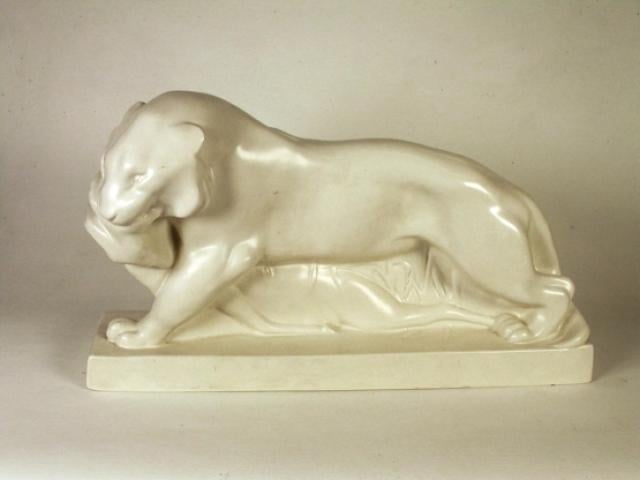Wedgwood and Nature: Animal Sculpture – Tiger with Buck by Skeaping
This model of a tiger and buck perfectly evokes the art deco era. The figurines John Skeaping produced for Wedgwood were executed in a minimalist yet commanding style, and were very contemporary in the 1920s.
John Rattenbury Skeaping was born in Essex in 1901 and studied at Blackheath School of Art. Eventually he became a scholar at the Royal Academy School and, in 1924, he won the Prix de Rome – a prize that included a gold medal and a bursary for the winner to work in Rome. During his three years in Rome Skeaping married the sculptress Barbara Hepworth.
On his return to England in 1926 he was introduced to Frank Wedgwood, Wedgwood’s managing director. After visiting the Etruria factory Skeaping was commissioned to model a series of animal studies for which he was paid £100.
The series consisted of 14 figures - ten of which eventually went into production at the end of 1927. These figurines included Tiger and Buck, Fallow Deer, Polar Bear, Monkeys, and both standing and a seated Duiker - a type of deer. A Buffalo figure also produced within the series was based on an east African buffalo calf that had been born at London Zoo in 1927. A 1930s Wedgwood advertising brochure described how ‘The excellence of these animal figures proves how amply Mr. Skeaping’s studies of animal life have been repaid.’
The animal figures were produced in black basalt and also in earthenware bodies applied with a variety of matt and coloured glazes, including the matt white Moonstone and a matt straw. In 1987 six of the subjects were re-issued in Queen’s ware - enabling a new generation to enjoy these striking sculptures.
